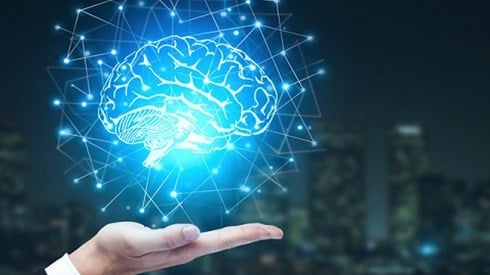Allianz: Insurers To Play Crucial Role in Artificial Intelligence

May 01, 2018

In the recent report The Rise of Artificial Intelligence: Future Outlook and Emerging Risks, insurer Allianz Global Corporate & Specialty (AGCS) identifies both the benefits and emerging risk concerns around the growing implementation of artificial intelligence (AI) in society and industries, including the insurance sector. According to Allianz, AI—also referred to as machine learning—is essentially software that is able to think and learn like a human.
"AI comes with potential benefits and risks in many areas: economic, political, mobility, healthcare, defense, and the environment. Active risk management strategies will be needed to maximize the net benefits of a full introduction of advanced AI applications into society," said Michael Bruch, head of emerging trends at AGCS.
Allianz said that today, "weak" or basic forms of AI are able to perform specific tasks, but future generations of so-called strong AI applications will be capable of solving difficult problems and execute complex transactions. AI is beginning to find users in almost every industry, from chatbots that offer financial advice, to helping doctors diagnose cancer. The technology is used to power driver-less cars, where it is estimated it could help reduce the number of accidents by as much as 90 percent; better predict the weather; process financial transfers; or to monitor and operate industrial machines. According to Accenture, AI could double the annual economic growth rate in 12 developed economies by 2035.1
But with these potential benefits come risks, said Allianz. Cyber risks, which are one of the biggest risks for businesses, according to the 2018 Allianz Risk Barometer, illustrate the two different faces of new technologies like AI. AI-powered software could help to reduce cyber risk for companies by better detecting attacks, but it could also increase cyber risk if malicious hackers are able to take control of systems, machines, or vehicles. AI could enable more serious and more targeted cyber incidents to occur by lowering the cost of devising attacks. The same hacker attack—or programming error—could be replicated on numerous machines. It is already estimated that a major global cyber attack has the potential to trigger losses in excess of $50 billion,2 but even a half-day outage at a cloud service provider has the potential to generate losses around $850 million.3
Emerging AI Risks in 5 Areas
To identify emerging AI risks, AGCS has focused on five areas of concern.
- Software accessibility
- Safety
- Accountability
- Liability
- Ethics
"By addressing each of these areas, responsible development and introduction of AI becomes less hazardous for society. Preventive measures that reduce risks from unintended consequences are essential," Mr. Bruch said. In terms of safety, for example, the race for bringing AI systems to the market could lead to insufficient or negligent validation activities, which are necessary to guarantee the deployment of safe, functional, and cyber-secure AI agents. This, in turn, could lead to an increase in defective products and recalls.
With regard to liability, AI agents may take over many decisions from humans in future, but they cannot legally be held liable for those decisions. In general, the manufacturer or software programmer of AI agents is liable for defects that cause damage to users. However, AI decisions that are not directly related to design or manufacturing, but are taken by an AI agent because of its interpretation of reality, would have no explicit liable party, according to current law. "Leaving the decisions to courts may be expensive and inefficient if the number of AI-generated damages start increasing," Mr.Bruch said. "A solution to the lack of legal liability would be to establish expert agencies or authorities to develop a liability framework under which designers, manufacturers, or sellers of AI products would be subject to limited tort liability."
Meanwhile, insurers will have a crucial role to play in helping to minimize, manage, and transfer emerging risks from AI applications. Traditional coverages will need to be adapted to protect consumers and businesses alike. Insurance will need to better address certain exposures to businesses, such as cyber attacks, business interruption, product recall, and reputational damage. New liability insurance models will likely be adopted (e.g., in areas such as autonomous driving, increasing the pressure on manufacturers and software vendors and decreasing the strict liability of consumers).
Insurers Are Early AI Adopters
The insurance industry has been an early adopter of machine learning as it deals with lots of data and repetitive processes. "There is huge potential for AI to improve the insurance value chain. Initially, it will help automate insurance processes to enable better delivery to our customers. Policies can be issued, and claims processed, faster and more efficiently," Mr. Bruch explained. By boosting data analytics, AI can also give insurers and their customers a much better understanding of their risks so that they can be more effectively reduced, while new insurance solutions could also be developed. For example, AI-powered analytics could help companies better understand cyber risks and improve security. At the same time, the technology could assist insurers in identifying accumulations of cyber exposure. Last but not least, AI will change the way insurers interact with their customers, enabling 24/7 service.
Footnotes
- Mark Purdy and Paul Daugherty, Accenture, Why Artificial Intelligence Is the Future of Growth, January 2017.
- Lloyd's, Extreme Cyber-Attack Could Cost as Much as Superstorm Sandy, July 17, 2017.
- Allianz, 2018 Allianz Risk Barometer, January 2018.
May 01, 2018



